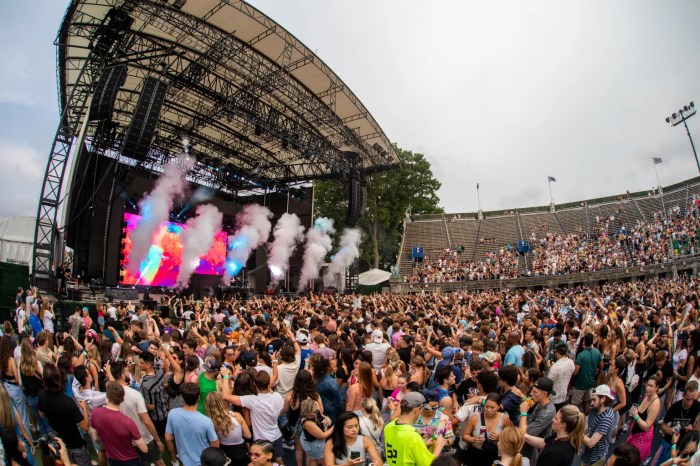By Kevin Zimmerman
French artist Edgar Degas, known for his paintings and sculptures of ballerinas, was a closeted photographer.
Degas was 4 when fellow countryman Louis Jacques Mandé Daguerre appeared at the French Académie des Sciences to demonstrate his invention of capturing images onto silver-plated sheets of copper using iodine vapors, mercury fumes and a saltwater stabilizer in 1839.
These daguerreotypes — as the first photographic images were dubbed — captured the imagination of the public, but the art world was a bit slower to come around.
“Some of the avant-garde and progressive artists embraced photography, but secretly,” Amy Winter, director of the Godwin-Ternbach Museum, said. “Degas used photographs as aids, as references. He would take a photo and use that to create his figures.”
Today anyone with a cell phone could be considered a photographer, but some of the more iconic images captured over the last century and a half will be on display as part of a new exhibition, “Masters of American Photography & Photographs from the Matthew R. Bergey Collection,” opening Monday at the Queens College museum.
“It is really like two shows,” Winter said. “The ‘Masters of American Photography’ is a touring show from the Reading Public Museum in Pennsylvania. And then downstairs are 39 pictures that are a gift to us from Matthew R. Bergey.”
At the top of the museum’s stairs hangs one of the most iconic images from the Great Depression, Dorothea Lange’s “Migrant Mother — Nipomo, California.” The woman, in tattered and dirty clothing, sits with her chin in the palm of her hand with an intense and worried stare looking to the distance. On either side, a small child clings to each of her shoulders with their faces hidden from view.
Lange made her masterpiece when she worked for the Farm Security Administration during the Depression documenting the countryside and its people as a photojournalist.
Other works in this touring exhibition include photographs by Alfred Stieglitz, Ansel Adams and Margaret Bourke-White.
“A lot of these images are of everyday life and everyday people,” Winter said. “It’s about finding beauty in common places and making everyday images beautiful.”
Not every picture evoked happy thoughts in the viewer. Many of these New Deal photographers went out of their way to create images of despair and inequalities, hoping to use their art to make social changes, Winter said.
“These really were a reflection of the New Deal and how people had to be helped by the government,” Winter said.
While the works upstairs focus on mostly big-named photographers from the 20th century, the second part of the exhibition on the ground floor provides a visual tutorial of the history of the medium.
Now part of the Godwin-Ternbach’s permanent collection, the Bergey photographs — nearly all in black and white — line the stark pale walls of the museum’s first floor and provide an historical time line.
The display kicks off with a still life of seashells by an unknown artist from the mid-19th century. Early photographers opted to stick to the big three genres — still lifes, landscapes and portraits — which is a carryover from the world of painting, said Winter. The early images also tend to a have brownish tone from the chemicals used to print them, including albumen, which comes from an egg white.
But unlike in other art fields, women were at the forefront of the photography movement almost from the beginning. English photographer Julia Margaret Cameron is represented in the show by a portrait she created of her son in the 1860s. At a time when the accoutrements of the art form proved too expensive for most individuals, Cameron shot photographs of many famous people of her time, including Lewis Carroll and Lord Byron, Winter said.
Other shutterbugs of the time played around with lighting and focus to give their photographs a more artistic look.
“They wanted to do what the artists were doing,” Winter said.
One piece in the show from Adolph Petzold is a bucolic meadow scene with large trees in the background and blankets of flowers in front. The image is deliberately out of focus giving the entire photo a softness reminiscent of an Impressionist painting.
But as the new century progressed, subject matter deemed suitable for artistic photographs changed sharply.
A few frames down from Petzold’s verdant scene is one of Ira Wright Martin’s works showing nearly a dozen smokestacks belching billowing clouds of smoke.
“The landscape becomes industry,” Winter said. “In the 1920s and 1930s there was this whole faith-in-progress movement that also influenced painters, too.”
Although the Depression quickly ended the industry as a type of god thinking, the post-war years of the mid-20th century brought another expansion in subject matter, including the introduction of fashion photography from the likes of Richard Avedon.
“He is just pushing the envelope of the category,” Winter said. “It is more than photographing a model standing there.”
Three of Avedon’s pieces are on display including “Woman in French Train Station” and a disheveled and out of focus Marlene Dietrich in her bedroom looking nothing like a glamorous movie star.
For Winter, the new additions compliment the museum’s cache of photographic images and provide a link to understanding how the art form has developed over the last 176 years.
“The pace of technology has led us so far away from the past,” Winter said. “It is wonderful to have these iconic photographs in our collection to use.”
If you Go
“Masters of American Photography & Photographs form the Matthew R. Bergey Collection”
When: April 13 – June 6
Where: Godwin-Ternbach Museum, Queens College, 405 Klapper Hall, 65-30 Kissena Blvd., Flushing
Cost: Free
Contact: (718) 997-4747
Website: www.gtmus
An opening night reception with a talk by Reading Public Museum curator Scott A. Schweigert is planned for Thursday, April 23, at 6 p.m. Winter will speak at a second event scheduled for Thursday, May 7.

































